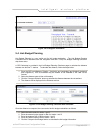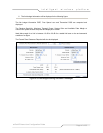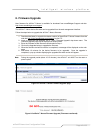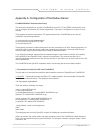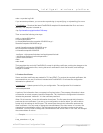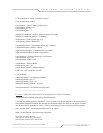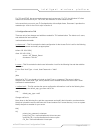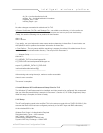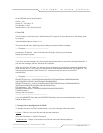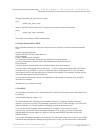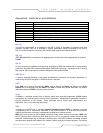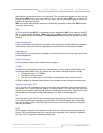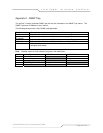
Page 52 of 55
airPoint™ Nexus User Configuration Guide
intelligent wireless platform
then forwards the encrypted frame to its destination. The encrypted data frames are sent with the
MAC header WEP bit set. Thus, the receiver knows to use the shared WEP key to decrypt the
payload and recover the original frame. The new frame, with an unencrypted payload can then be
passed to an upper layer protocol.
WEP keys can be either statically configured or dynamically generated. In either case, WEP has been
found to be easily broken.
WPA
Wi-Fi Protected Access (WPA) is a replacement security standard for WEP. It is a subset of the IEEE
802.11i standard being developed. WPA makes use of TKIP to deliver security superior to WEP.
802.1X access control is still employed. The Authentication Server provides the material for creating
the keys.
Packet Concatenation
Packet concatenation will increase the throughput of the equipment by simply buffering the packets at
the transmitter and convert them into superframe for the transmission over the wireless interface.
Packet Bursting
Packet bursting is for increasing the throughput by increasing the window size and reducing the time
for acknowledgement.
Packet Compression
LZO compression is being used to achieve more throughputs.
COFDM
COFDM involves modulating the data onto a large number of carriers using the FDM technique. The
Key features which makes it work, in a manner is so well suited to terrestrial channels, includes:
• Orthogonality (the “O” of COFDM);
• The addition of Guard interval;
• The use of error coding (the “C” of COFDM), interleaving and channel-state information
COFDM is resistant to multipath effects because it uses multiple carriers to transmit the same signal.
Spanning Tree Protocol (STP)
STP is a Layer 2 link management protocol that provides path redundancy while preventing loops in
the network. For a Layer 2 Ethernet network to function properly, only one active path can exist
between any two stations. Spanning-tree operation is transparent to end stations, which cannot detect
whether they are connected to a single LAN segment or to a LAN of multiple segments.
RIP
The most popular of the TCP/IP interior routing protocols is the Routing Information Protocol (RIP).
RIP is used to dynamically exchange routing information. RIP routers broadcast their routing tables
every 30 seconds by default. Other RIP equipments will listen for these RIP broadcasts and update
their own route tables.
DHCP
DHCP stands for ‘Dynamic Host Configuration Protocol’ and is a means for networked computers to
get their TCP/IP networking settings from a central server. Importantly, DHCP assigns IP addresses
and other TCP/IP configuration parameters automatically.



